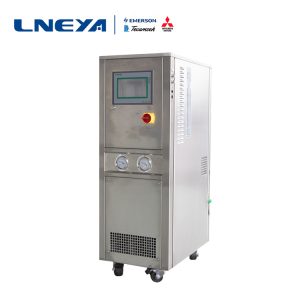Temperaturbedingungen von Batterien für neue Energiefahrzeuge

When automobile manufacturers continue to improve battery life to overcome the driver’s mileage anxiety, the energy density of the large batteries installed is also gradually increasing, which means that the temperature monitoring function of the battery system needs to be more perfect. No matter in the case of normal driving or fast charging, in order to ensure battery life and avoid battery thermal runaway, the design of the battery system needs to consider the heat dissipation strategy and overheating protection mechanism.
Generally, the battery system of a pure electric vehicle (BEV) has about 100 temperature measurement points, and each measurement position represents the battery temperature state in this area. The overall temperature distribution state is collected by the BMS, and is monitored and communicated by the BMS. Judging the result, the temperature control strategy of the whole vehicle can be corrected in real time, for example: improving water cooling efficiency, limiting battery charge and discharge current, etc.
Because of the importance of the combination of battery temperature control mechanism and BMS, existing testing laboratories and battery manufacturers have put forward the verification requirements of battery temperature control and BMS judgment mechanism. In the test process, in addition to requiring temperature measurement accuracy and temperature reading synchronization, it also has a detection function that can simulate temperature control changes in real time when the temperature changes.
The reasonable temperature of the battery pack is between 10°C and 30°C, and the liquid cooling system may reach -40°C in low temperature weather. It is necessary to increase the temperature of the -40°C liquid cooling system to cool down. How much liquid needs to pass through at this time? To ensure that the battery temperature is controlled within the range of 10°C-30°C, and the pipe diameter of the automotive liquid cooling system is fixed, then the pressure needs to be adjusted to control the flow. By analogy, as the temperature of the car coolant changes, the pressure also needs to change in order to ensure the flow of the battery coolant.
In high temperature weather, the temperature of the car coolant and the battery pack may reach above 50°C, what is the charging and discharging condition of the battery pack? The cooling capacity of the vehicle refrigeration system (cooling of the air-conditioning space in the vehicle, battery pack, electric drive, and engine liquid cooling system) is distributed in any way, so that the thermal management of the vehicle can be quickly balanced, and the performance of the vehicle can reach a reasonable range.
The above data comes from a test platform, if you have any questions, please contact us to delete and modify.

Verwandte Empfehlungen
-
Kühl-, Heiz- und Temperiergeräte für die Prüfkammer von Autobatterien
947The car battery testing chamber high and low temperature integrated machine is a testing equipment that integrates high and low temperature functions, specifically designed to evaluate the performance and durability of car batteries (such as l...
Details anzeigen -
Kühl-Heiz-System ergänzt Temperatur-Lösung für die pharmazeutische und chemische Industrie
962LNEYA ist seit mehr als zehn Jahren ein professioneller Hersteller von verschiedenen Temperaturkontrollinstrumenten. Es ist in der pharmazeutischen, chemischen, wissenschaftlichen Forschung, Industrie, neue Energie, Chip und anderen Branchen tätig. Die Forschung und Entwicklung von
Details anzeigen -
Refrigeration heating machine pipe description
1054When the refrigeration and heating integrated machine is running, the user will find out whether the fully enclosed pipeline affects the overall performance of the equipment. The LNEYA refrigeration and heating integrated machine adopts a fully cl...
Details anzeigen -
Temperaturkontrollsystem zur Kontrolle der Testtemperatur von integrierten Schaltungen
1048Fortschritte in der Halbleitertechnologie haben zur Entwicklung von elektronischen Geräten der nächsten Generation geführt, wie z. B. integrierten Schaltkreisen, die immer mehr aktive Komponenten, eine höhere Komplexität der Schaltkreise, eine kleinere Fläche und eine engere Verdrahtung aufweisen. Diese Attr...
Details anzeigen
 LNEYA Industriekühler Hersteller Lieferant
LNEYA Industriekühler Hersteller Lieferant













